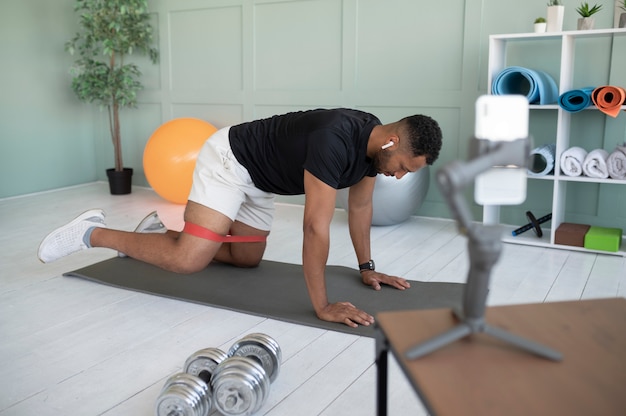If you're new to the gym and trying to figure out the best way to build a strong, stable core, you've probably heard about two popular cardio styles: HIIT (High-Intensity Interval Training) and steady-state cardio. But which one actually helps improve core stability more effectively? And how can you start fast, stay consistent, and track your progress each week?
Before comparing their effects on core stability, it's important to understand what each type of cardio involves.
HIIT (High-Intensity Interval Training) alternates short bursts of intense exercise with brief recovery periods. For example, 30 seconds of sprinting followed by 1 minute of walking, repeated for 15–20 minutes. It’s time-efficient and known for boosting metabolism and fat loss.
Steady-State Cardio involves maintaining a consistent, moderate intensity over a longer duration—like jogging, cycling, or brisk walking for 30–60 minutes. It’s less intense but promotes endurance and heart health.

Core stability isn’t just about having visible abs. It refers to the ability of your deep abdominal muscles, lower back, pelvis, and hips to work together to support your spine and maintain balance during movement. A strong core improves posture, reduces injury risk, and enhances overall performance in daily activities and workouts.
Both HIIT and steady-state cardio engage the core—but in different ways.
HIIT workouts often include dynamic, full-body movements like burpees, mountain climbers, jump squats, and plank-to-push-ups. These exercises require significant core engagement to maintain form and control during explosive transitions.
Because HIIT challenges your body’s balance and coordination under fatigue, it trains your core muscles to stabilize your torso under stress. This functional strength translates well to real-life movements and athletic performance.
Additionally, many HIIT routines incorporate short isometric holds (like planks or wall sits), which directly strengthen core endurance. The high metabolic demand also leads to increased activation of deep core stabilizers as your body works to maintain posture during intense intervals.

While steady-state cardio may seem less intense, it still plays a valuable role in building core stability—especially over time. Activities like brisk walking, jogging, cycling, or swimming require continuous postural control.
For example, during a 30-minute jog, your core muscles are constantly working to stabilize your pelvis, support your spine, and transfer energy between your upper and lower body. This sustained engagement improves muscular endurance and neuromuscular control—key components of long-term core stability.
Low-Intensity Steady-State (LISS) cardio is also easier to recover from, making it ideal for beginners who are still learning proper form and building baseline fitness. Consistency with LISS can lay the foundation for more advanced training later.
Research suggests that neither HIIT nor steady-state cardio is universally superior. A study from the Institute of Sports Medicine in Hannover found that both forms improve physical fitness when performed consistently. The key lies in how each method is applied.
For rapid core activation and functional strength, HIIT has the edge due to its dynamic, full-body nature. However, for building endurance and sustainable posture control, steady-state cardio offers unique benefits.
As a beginner, the best approach is often a combination: use HIIT 1–2 times per week to challenge your core with intensity, and include steady-state sessions 2–3 times per week to build endurance and promote recovery.
Here’s a simple plan tailored for gym newbies:
Consistency matters more than intensity at this stage. Even 10–15 minutes of daily movement adds up.

Both HIIT and steady-state cardio contribute to core stability in complementary ways. HIIT delivers fast, functional core challenges, while steady-state builds endurance and postural control. For beginners, a balanced routine that includes both—along with weekly tracking—offers the best path to a stronger, more stable core.
Start where you are, move consistently, and celebrate small wins. Your core—and your confidence—will grow stronger every week.

Fitness

Fitness

Fitness

Fitness

Fitness

Wellness

Fitness

Fitness

Fitness

Fitness

Fitness

Fitness

Health

Fitness

Health

Health